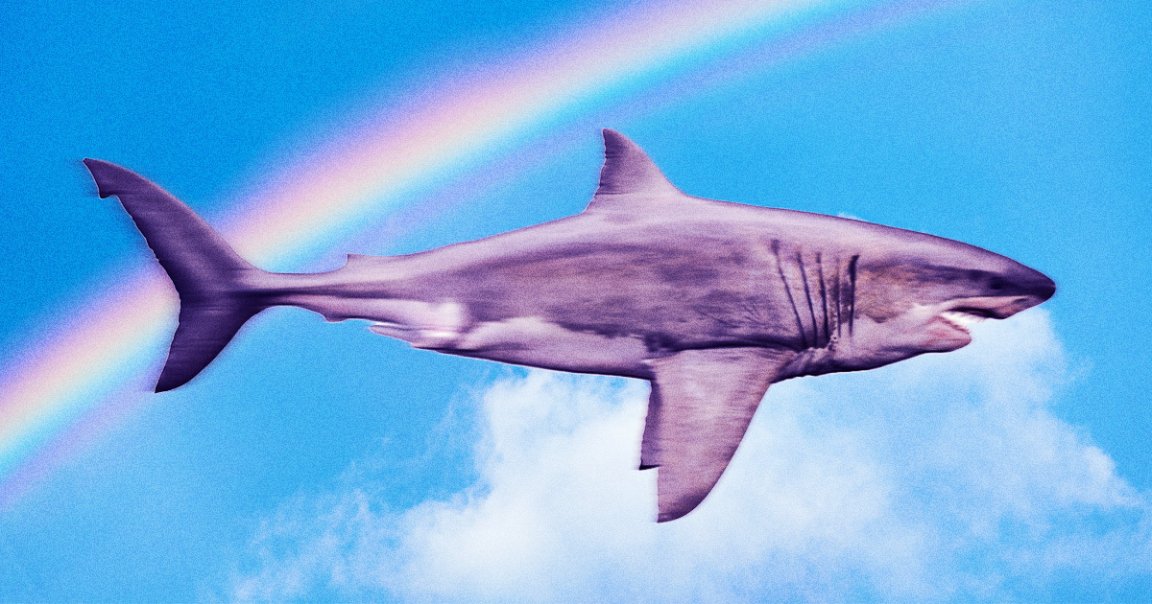
Air Sharks
Lufthansa, Germany’s largest airline, is experimenting with using a synthetic material that mimics sharkskin to make its planes more aerodynamic, as part of its ongoing efforts to cut down on carbon emissions.
The faux-sharkskin, called AeroSHARK, was already being used on over a dozen aircraft owned by Lufthansa and its subsidiary airlines, which have collectively flown over 100,000 hours while outfitted with the scaly material, according to the airline.
And now, off the back of promising results, Lufthansa says it will be adding the sharkskin, in the form of extremely thin riblets, to another four Boeing 777-200ER airplanes operated by Austrian Airlines, Ars Technica reports — which could signal even more widespread use in the future.
Skin in the Game
Sharkskin is well known for being abrasive. If you rub your skin against it the wrong way, it’d burn you like sandpaper, due to tiny V-shaped scales called dermal denticles that comprise its surface.
This same property, however, is also what makes sharkskin so efficient for swimming. In addition to their shape, the denticles also benefit from their uniform orientation towards the shark’s rear, which makes forward movement far slicker.
The drag-reducing properties of sharkskin have prompted experimentation with synthetic materials for decades, like in swimsuits — controversially — as well as boats and now aircraft.
But there’s still much to be understood in our efforts to borrow from these creatures, since a variety of factors like the shape, sizing, and distribution of the denticles can affect how they reduce drag. Any combination of those variables can produce wildly different results, especially when transplanting the effects from sea to air.
Rough Around the Edges
That being said, Lufthsansa’s formulation already seems to provide tangible benefits. Four Boeing passenger planes will be covered with about 9,000 square feet of AeroSHARK riblets, which is expected to reduce drag by about one percent. That may not sound like a lot, but even that tiny margin will make a significant difference over many flights.
The airline claims that over four years, the aircraft will each save about 8,300 metric tons worth of CO2 emissions — the equivalent of 46 flights from Vienna to New York
In addition to the four new aircraft, which won’t be fully upgraded until March, Lufthansa has outfitted 17 other airplanes with the sharkskin tech: a dozen Boeing 777-200ERs operated by SWISS, a Lufthansa Boeing 747-400, and the four Lufthansa Cargo 777F aircraft.
On its own, slapping sharkskin onto planes won’t transform the aviation industry into being carbon neutral, which major airlines have pledged to achieve by 2050 — but every little bit helps.
More on aviation: Boeing Contractors Say They Were Treated Like “Cockroaches”